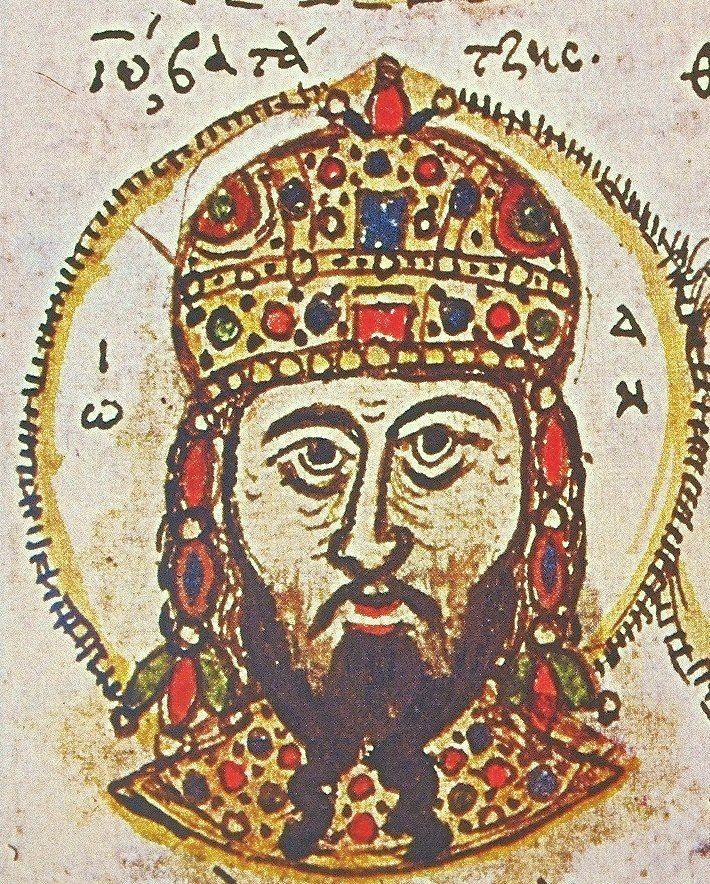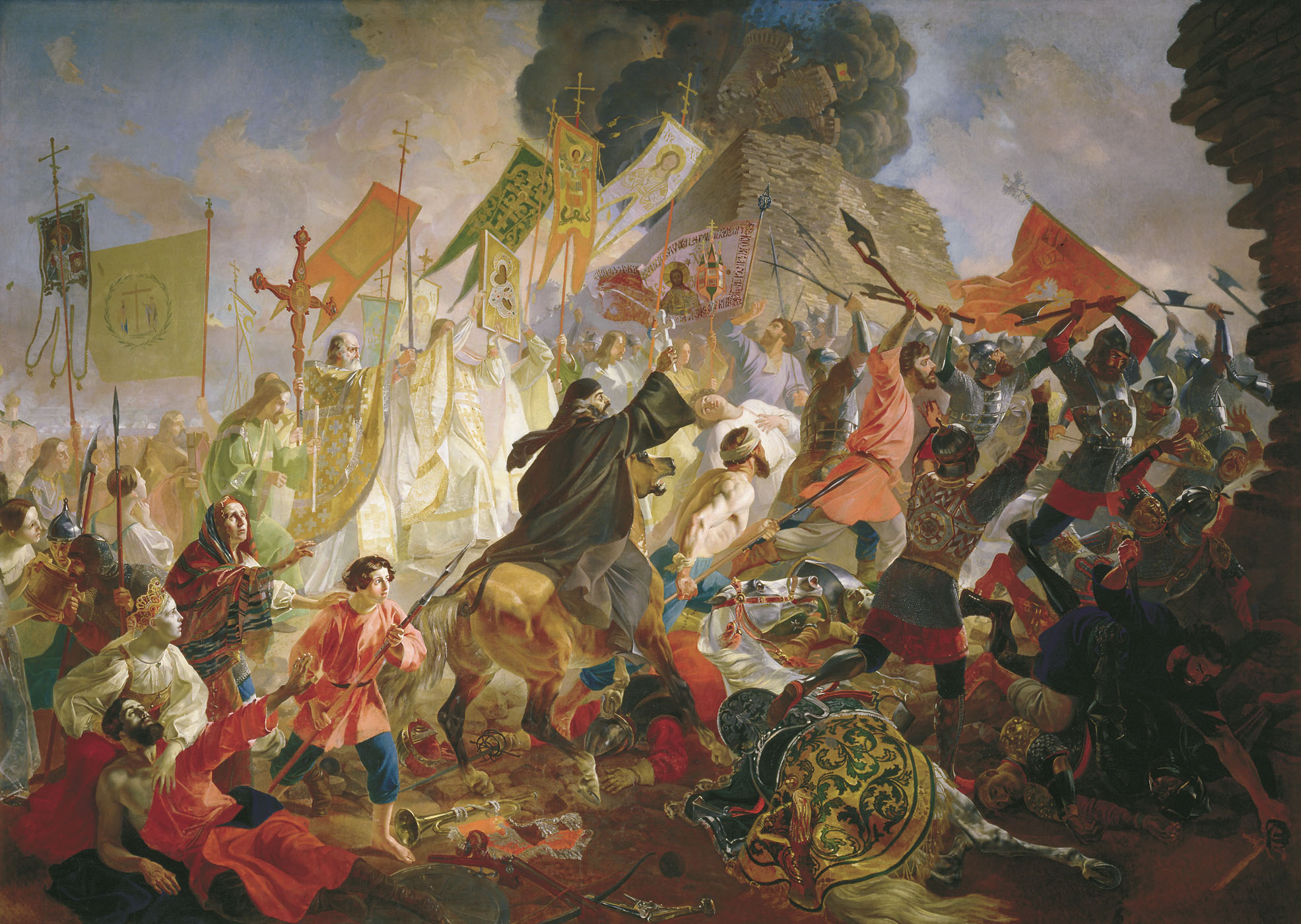|
Vetseke
Vyachko (; died 1224; also ''Vyacheslav''), also known as Vetseke, was the prince of Koknese (Kuikenos). He later became the prince of Yuryev (now Tartu) while in the service of Novgorod, which was the last Russian stronghold in Estonia. He died during the defense of the city against the Livonian Brothers of the Sword in 1224. Origins Vetseke may have been the equivalent to the Russian Vyachko (a shortened form of Vyacheslav). Evidence from the ''Chronicle of Henry of Livonia'' indicates the possibility that he came from a local élite, perhaps a Livonian, who converted to Orthodox Christianity and became a vassal of the Principality of Polotsk. Despite this, he was still perceived as a Russian prince. The ''Chronicle'' says that the population of Koknese (Kokenhusen) included Balts ( Latgallians and Selonians) and a Germanic colony, as well as some Slavic peoples. Early relations with the Crusaders At the beginning of the 13th century, when during the Northern Crusades the c ... [...More Info...] [...Related Items...] OR: [Wikipedia] [Google] [Baidu] |
Principality Of Koknese
The Principality of Koknese (; ; ) was a small vassal state of the Principality of Polotsk on the right bank of the Daugava River in ancient Livonia (modern Latvia) during the Middle Ages. History At the beginning of the 13th century, when the crusading Livonian Brothers of the Sword led by bishop Albert of Riga began to occupy the shores of the Gulf of Riga, the Eastern Orthodox prince Vetseke ruled the fortress of Koknese some 100 km upstream. According to old sources, Vetseke gave half of his land to Albert of Riga in 1205 in return for protection against the . During one of their raids he was captured by the |
Livonian Brothers Of The Sword
The Livonian Brothers of the Sword (; ) was a Catholic Church, Catholic Military order (monastic society), military order established in 1202 during the Livonian Crusade by Albert of Riga, Albert, the third bishop of Riga (or possibly by Theoderich von Treydend). Pope Pope Innocent III, Innocent III sanctioned the establishment in 1204 for the second time. The membership of the Crusades, crusading Military order (religious society), order comprised warrior monk, warrior monks, mostly from northern Germany, who fought Baltic peoples, Baltic and Baltic Finnic peoples, Finnic Paganism, pagans in the area of modern-day Estonia, Latvia and Lithuania. Alternative names of the Order include Christ Knights, Swordbrothers, Sword Brethren, Order of the Brothers of the Sword, and The Militia of Christ of Livonia. The seal reads: ''+MAGISTRI ETFRM (et fratrum) MILICIE CRI (Christi) DE LIVONIA''. Following their defeat by the Samogitians and Semigallians in the Battle of Saule in 1236, the s ... [...More Info...] [...Related Items...] OR: [Wikipedia] [Google] [Baidu] |
Ugandi
Ugandi (Latin: ''Ungannia'' or ''Ugaunia''; ; Low German: ''Uggn'') was an Independence, independent county between the east coast of Lake Võrtsjärv and west coast of Lake Pskov, bordered by Vaiga, Mõhu, Nurmekund, Sackalia, Sakala, Tālava, and The Principality of Pskov. Ugandi had an area of approximately 3000 hide (unit), hides. Ugandi corresponded roughly to the present Estonia's territory of Võru County, Põlva County and half of Tartu County and Valga County, as well as Petseri County. The county was first mentioned in print by Henry of Livonia After the Northern crusades it became the Bishopric of Dorpat. In Latvian language, Latvian, ''Igaunija'' (''Ugaunija'' is the Latvian name for the Ugaunia county) is still the modern national name for Estonia. The name ''Ugandi'' is derived by associating "Ugaunia" with the name of ''Uandimägi'' Hill near Otepää. An alternate theory proposes that the name "Ugaunia" could have been derived from the Slavic languages, Slavic l ... [...More Info...] [...Related Items...] OR: [Wikipedia] [Google] [Baidu] |
Northern Crusades
The Northern Crusades or Baltic Crusades were Christianization campaigns undertaken by Catholic Church, Catholic Christian Military order (society), military orders and kingdoms, primarily against the paganism, pagan Balts, Baltic, Baltic Finns, Finnic and West Slavs, West Slavic peoples around the southern and eastern shores of the Baltic Sea. The most notable campaigns were the Livonian Crusade, Livonian and Prussian Crusade, Prussian crusades. Some of these wars were called crusades during the Middle Ages, however others, including the 12th century First Swedish Crusade and several following military incursions by Scandinavian Christians against the then pagan Finnish people, Finns, were dubbed "crusades" only in the 19th century by romantic nationalism, romantic nationalist historians. However, crusades against Estonians and against "other pagans in those parts" were authorized by Pope Alexander III in the crusade bull, crusade Papal bull, bull ''Non parum animus noster'', in ... [...More Info...] [...Related Items...] OR: [Wikipedia] [Google] [Baidu] |
1224 Deaths
Year 1224 ( MCCXXIV) was a leap year starting on Monday of the Julian calendar. Events January – March * January 14 – Emperor Xuan Zong of the Chinese Jurchen-led Jin dynasty dies after a 10-year reign. He is succeeded by his 25-year-old son, Ai Zong, who conquers more Song territory during the Jin–Song Wars. * February 20 – Jacopo Tiepolo (later: Doge of the Republic of Venice, 1229–1249), reaches an agreement in his capacity as Podestà, with Robert I, Emperor of Constantinople Latin Emperor, for favorable treatment for the Venetians in the Empire. * February – King Ferdinand III (the Saint) announces his intention to resume the ''Reconquista'' against the realm of the Almohad Caliphate. Caliph Yusuf II al-Mustansir dies and is succeeded by Abu Muhammad al-Wahid, but in Al-Andalus, two competing pretenders also claim their rights to the throne: Abu Muhammad Ibn al-Mansur al-Adil in Seville and Abu Muhammad abu Abdallah al-Bayyasi in Córdoba. The c ... [...More Info...] [...Related Items...] OR: [Wikipedia] [Google] [Baidu] |
Full Collection Of Russian Chronicles
The Complete Collection of Russian Chronicles (, abbr. ''PSRL'') is a series of published volumes aimed at collecting all medieval East Slavic chronicles, with various editions published in Imperial Russia, the Soviet Union, and Russian Federation. The project is ongoing and far from finished. The chronicles were assembled by the Archaeographical Expedition of the Russian Academy of Sciences (starting in 1828). They were prepared for publication by the Archaeographical Commission, established in 1834 as part of the Ministry of National Enlightenment. The first volumes were published by a publisher "Typography of Edward Prats". The commission was charged to publish the collection on February 18, 1837. The first ten volumes appeared between 1841 and 1863. New volumes have been brought forth piecemeal throughout the 20th and early 21st centuries. Some of the older volumes have also been reprinted, especially after 1997. In 1977, Ludolf Müller discovered that thousands of text ... [...More Info...] [...Related Items...] OR: [Wikipedia] [Google] [Baidu] |
Pskov
Pskov ( rus, Псков, a=Ru-Псков.oga, p=psˈkof; see also Names of Pskov in different languages, names in other languages) is a types of inhabited localities in Russia, city in northwestern Russia and the administrative center of Pskov Oblast, located about east of the Estonian border, on the Velikaya, Velikaya River. Population: Pskov is one of the oldest cities in Russia. During the Middle Ages, it served as the capital of the Pskov Republic and was a trading post of the Hanseatic League before it was incorporated into the Grand Duchy of Moscow and became an important border fortress in the Tsardom of Russia. History Early history Pskov is one of the oldest cities in Russia. The name of the city, originally Pleskov (historic Russian spelling , ), may be loosely translated as "[the town] of :wikt:purling, purling waters". It was historically known in English as Plescow. Its earliest mention comes in 903, which records that Igor of Kiev married a local lady, Olga ... [...More Info...] [...Related Items...] OR: [Wikipedia] [Google] [Baidu] |
Sakala County
Sakala County ( Estonian: ''Sakala'', Latin: ''Saccalia'') was an ancient Estonian county that was first mentioned in print by Henry of Latvia in the early 13th century. Geography Sakala County is in northwestern Livonia, covering approximately the present counties of Viljandi, the southern half of Pärnu and the western third of Valga County. It was the southernmost of the ancient Estonian counties. History According to one hypothesis, the tribe of ''Sosols'' mentioned in Old East Slavic chronicles implies the people of Sakala. The chronicles say that Kievan Rus organized military campaign against Sosols in 1060 and taxed them. A year later, Sosols rose, destroyed Kievan Rus Fort in Tartu and tried to attack Pskov. After the Livonian Crusade, the county became a part of the Livonian Confederation. In Sackalian folklore, the neighbouring Ugaunians (''ugalased'') were enemy warriors and robbers. For instance, a folk song from Viljandi Viljandi (, , , , ) is a Populated p ... [...More Info...] [...Related Items...] OR: [Wikipedia] [Google] [Baidu] |
Soviet Historiography
Soviet historiography is the methodology of history studies by historians in the Soviet Union (USSR). In the USSR, the study of history was marked by restrictions imposed by the Communist Party of the Soviet Union (CPSU). Soviet historiography is ''itself'' studied in modern historiography. Theoretical approaches George M. Enteen identifies two approaches to the study of Soviet historiography. A totalitarian approach associated with the Western analysis of the Soviet Union as a totalitarian society, controlled by the Central Committee of the Communist Party of the Soviet Union, this school "thought that signs of dissent merely represented a misreading of commands from above."363 For Enteen the other school of writing on Soviet historiography is the social-history school which draws attention to "important initiative from historians at odds with the dominant powers in the field."363 Enteen is unable to decide between these different approaches based on current literature. In Mark ... [...More Info...] [...Related Items...] OR: [Wikipedia] [Google] [Baidu] |
The Death Of Vyachko
''The'' is a grammatical article in English, denoting nouns that are already or about to be mentioned, under discussion, implied or otherwise presumed familiar to listeners, readers, or speakers. It is the definite article in English. ''The'' is the most frequently used word in the English language; studies and analyses of texts have found it to account for seven percent of all printed English-language words. It is derived from gendered articles in Old English which combined in Middle English and now has a single form used with nouns of any gender. The word can be used with both singular and plural nouns, and with a noun that starts with any letter. This is different from many other languages, which have different forms of the definite article for different genders or numbers. Pronunciation In most dialects, "the" is pronounced as (with the voiced dental fricative followed by a schwa) when followed by a consonant sound, and as (homophone of the archaic pronoun ''thee' ... [...More Info...] [...Related Items...] OR: [Wikipedia] [Google] [Baidu] |
Viljandi
Viljandi (, , , , ) is a Populated places in Estonia, town and Municipalities of Estonia, municipality in southern Estonia with a population of 17,255 in 2024. It is the capital of Viljandi County and is geographically located between two major Estonian cities, Pärnu and Tartu. The town was first mentioned in 1283, upon being granted its town charter by Wilhelm von Endorpe. The town became a member of the Hanseatic League at the beginning of the 14th century, and is one of five Estonian towns and cities in the league. The once influential Estonian newspaper ''Sakala (newspaper), Sakala'' was founded in Viljandi in 1878. Symbols The flag of Viljandi is bi-coloured, its upper part is light blue and lower part white. The city's shield-shaped coat of arms is light blue, with a white rose in the middle. Viljandi is the white rose city – in midsummer there are 720 white roses flowering in front of the city hall, planted for the town's anniversary in 2003. In summer, the White Rose D ... [...More Info...] [...Related Items...] OR: [Wikipedia] [Google] [Baidu] |




